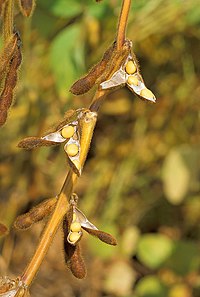
Photo from wikipedia
The large bowel of monogastric animals, such as that of humans, is home to a microbial community (microbiota) composed of a diversity of mostly bacterial species. Interrelationships between the microbiota… Click to show full abstract
The large bowel of monogastric animals, such as that of humans, is home to a microbial community (microbiota) composed of a diversity of mostly bacterial species. Interrelationships between the microbiota as an entity and the host are complex and lifelong and are characteristic of a symbiosis. ABSTRACT The large bowel of monogastric animals, such as that of humans, is home to a microbial community (microbiota) composed of a diversity of mostly bacterial species. Interrelationships between the microbiota as an entity and the host are complex and lifelong and are characteristic of a symbiosis. The relationships may be disrupted in association with disease, resulting in dysbiosis. Modifications to the microbiota to correct dysbiosis require knowledge of the fundamental mechanisms by which symbionts inhabit the gut. This review aims to summarize aspects of niche fitness of bacterial species that inhabit the monogastric gut, especially of humans, and to indicate the research path by which progress can be made in exploring bacterial attributes that underpin symbiont life in the gut.
Journal Title: Applied and Environmental Microbiology
Year Published: 2022
Link to full text (if available)
Share on Social Media: Sign Up to like & get
recommendations!